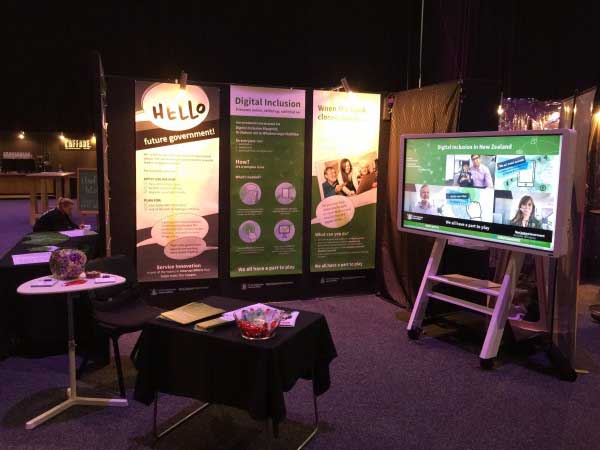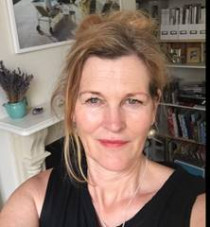Our team working on improving digital inclusion set up a booth at the Festival for the Future — a forward-looking weekend of inspiring speakers, panels, workshops, and the sharing of ideas.
We live in a country where digital is quickly becoming the default. But not everyone is able to take part. So how might we make sure everyone can participate, contribute, and benefit from a society that’s increasingly online?
To answer that question, our team working on improving digital inclusion set up a booth at the Festival for the Future — a forward-looking weekend of inspiring speakers, panels, workshops, and the sharing of ideas.

Some of the Government Chief Digital Officer’s (GCDO) team from the Department of Internal Affairs (DIA) who ran the booth at Festival for the Future. Left to right: Lorraine Tawhai, Marita Vandenberg, Deshan Gamage, Michelle Shannon-Smith.
Using tech bloopers to spark conversations
More than 1000 people attended Festival for the Future this year. Many were high school and university students keen to solve problems affecting us all around sustainability, climate change, social good and inclusion.
We used a ‘share your technology blooper’ board to start conversations with people as they passed by the booth. We invited them to tell us about funny — and potentially embarrassing — experiences they’d had with technology.
Among the many stories we heard, one person had tried changing the TV channel, but their remote was refusing to work. They quickly realised they were holding their phone. Another thought they were sending a text to their best friend saying how much they hated their job. They sent it to their boss instead.
We can all relate to these cringeworthy situations (hopefully not too many of us to that second one). They highlight how we can all gain from a better understanding of the outcomes of our digital decisions.
Discussing the 4 elements of digital inclusion
This was the first time the public have had the chance to speak face to face with the team since the release of the government’s Digital Inclusion Blueprint in May 2019. We were asked lots of great questions about how the government planned to put into action its stated role to lead, support, connect and deliver.
People also wanted to know whether this was all just about technology — a great cue for us to discuss the complexities of digital inclusion. Research has found that people and communities need 4 foundational elements to be considered digitally included:
- Motivation to engage with the digital world and understand the benefits of the internet
- Access to affordable digital devices, services, software and content
- Skills and know-how to use the internet and technology in a way that’s beneficial
- Trust in the digital world to avoid online harm and the ability to manage personal information.
Some people face multiple barriers to digital inclusion. These barriers are often linked to underlying issues, like poverty and inequality. These issues — as well as the symptoms — will need to be addressed to fully achieve digital inclusion in New Zealand.
The Digital Inclusion booth at the Festival for the Future

Three posters presented attendees with tips on how they can be more digitally inclusive. The screen played through 6 videos of people sharing their digital world experiences.
Whānau future-proofing whānau
Through kanohi ki te kanohi (face to face) conversations, we heard how people are already supporting friends and family to build confidence online. We learned about several community initiatives, including 2 community centres in Auckland that run computer skills classes for older people and migrants.
We were excited to meet people who wanted to be connected to the government’s work too. We’re trying to get as many people involved as we can — so we took their details!
Getting everyone involved
Digital inclusion requires everyone to play a part. That’s why we value getting out to events, and talking with people, whānau, communities, and businesses about why digital inclusion is important to them.
With everyone’s input, we can build support for this vital work. Together, we can create a solid foundation for a more digitally included society in Aotearoa New Zealand.
We’re writing more about our work and sharing the research on digital.govt.nz.
Sign up to receive updates when we write about digital inclusion.


